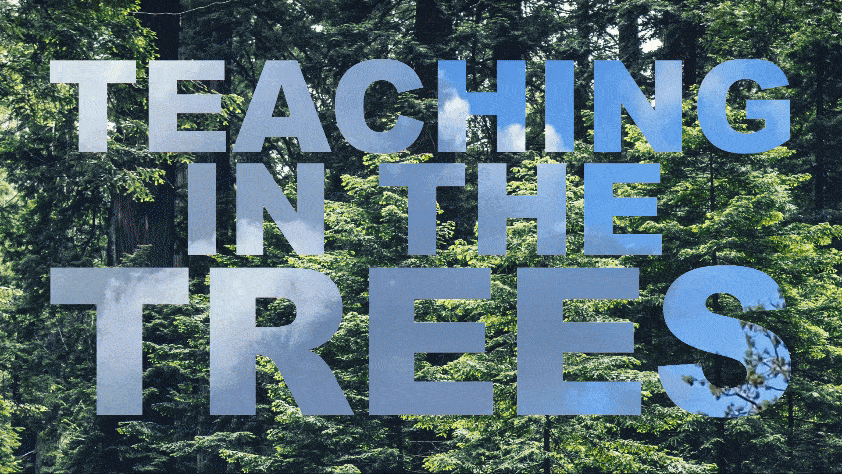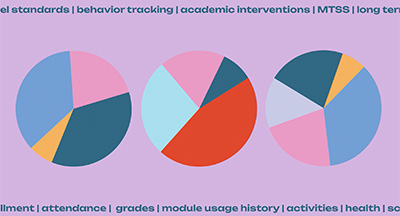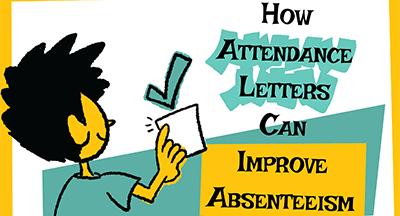
If public school grinds in gridlock, Waldorf-inspired public school rotates through cycles.
Like the wheel of the year, decision-making, daily routine, and even the very curriculum are designed in ripples surrounding students and moving them through a pedagogy built on specific developmental milestones. Waldorf-trained teachers spend early childhood nurturing and protecting the child’s imagination, allowing the child’s curiosities to unfold naturally before certain developmental cues indicate they’re ready for reading, writing, and academic concepts presented alongside handwork and art.
In the case of Waldorf-inspired public schools, these cycles are braced by state standards and all your typical public school milestones as well. What does this unique approach offer to students and families looking for an alternative? Let’s explore the roots of Waldorf education available to public school students.
What is Waldorf education?
Waldorf education emerged 100 years ago when Rudolf Steiner, a German philosopher, started the first Waldorf school for families of factory workers.If you’ve never explored Waldorf education, here is a non-expert crash course: Envision a school building, purposefully and beautifully made of simplistic, natural materials. There are no screens to steal students’ attention. Students work on a variety of artful pursuits including knitting, poetry, movement, gardening, hiking, and music. Teaching and learning often take place outdoors in nature. Most importantly, teachers focus on meeting the child in front of them at the child’s appropriate level of development.
Certain developmental milestones correspond with academic topics in Waldorf schools, such as reading instruction. These echoes of readiness correspond rather well with modern academic milestones. For example, Rudolf Steiner wrote in 1922, Inwardly the child is essentially quite a different creature up to about the 7th or 8th year, when the changing of the teeth begins. This is simply one accessible example of Steiner’s theory of physical development giving clues about what a child is mentally, emotionally, and spiritually ready to learn in a classroom.
There’s so much more to discuss about Rudolf Steiner, the purest form of Waldorf education, and its esoteric roots—including spiritual aspects inappropriate for a public school setting. However, it’s possible and productive to capture creative aspects of Waldorf education and implement them in a public school, incorporating movement, artistry, choice, the outdoors, and more. This is the goal of Waldorf-inspired public education, and its important distinction from private Waldorf education. Nearly 60 Waldorf-inspired public schools exist today. Two public school teachers explain the nuances that exist in their Waldorf-inspired classrooms.
How close is Waldorf-inspired public school to its inspiration?
Hailey M. and Taylor G. are co-teachers at Tomorrow River Community Charter School (TRCCS), part of the Tomorrow River School District in Amherst, Wisconsin. While Waldorf principles are heavily ingrained, public school standards are never far behind.The Alliance for Public Waldorf Education guides its member schools to help keep sacred the private Waldorf pedagogies while supporting a public approach. Teachers are trained to implement principles of public Waldorf education. For example, both Hailey and Taylor create elaborate chalkboard drawings, a direct callback to Steiner’s own artwork.
“Our daily routine includes a main lesson block of time in which students focus on a particular subject for an extended period of time, as well as skills and specials,” Hailey explains. The entire day is Waldorf-inspired, but the longer main lesson allows teachers to immerse students in movement, art, music, and creative writing. Skills, lessons, and curriculum meet all public school standards. And of course, nature plays its central role.
Nature is a big part of every day at TRCCS. Students spend time outdoors rain or shine, which is an interesting variable for central Wisconsin. Teachers design lessons meant to take place in outdoor classrooms.
“You have to be purposeful in your teaching. There’s a lot of planning involved,” Taylor explains. Hailey points out the freedom teaching outdoors offers for the class to naturally cycle between academics and brain breaks. “In breath, out breath. Let them go for a minute then reel them back in.”
Making decisions in a Waldorf-inspired public school
TRCCS has its own separate board in addition to the district school board. Decisions are made at administrative levels with consensus from teachers. Anything that needs to be done, the teachers hold the task. Because teachers are “holding” the school (notice the language leans more nurturing than hierarchical?), they rely on families to dedicate service hours to their community.“If there is a goal the school community wants to happen—for example, if we need a new recess space—we need support to make things happen,” Taylor explains. The various groups, from administrators to school community members, must reach consensus before moving forward with a new policy or project.
“It’s slow-moving, but the decisions we make are really solid,” Hailey says.
Classrooms and cohorts in Waldorf-inspired public education
“The students we’re sending off to other districts are impressive, and friendly, and have good social skills, and meet academic achievements. Many of our students are on the honor roll,” Hailey explains.Groups of children, or cohorts, move to different grade levels accompanied by the same teacher in a process called looping.
“Looping is common in different districts, but the systems are much smaller: so you’ll loop for two years, then go back [to the starting grade level],” Taylor explained. In contrast, Waldorf-inspired teachers may stick with their cohorts much longer.
“We have a couple teachers who are really passionate about doing the grade-one-to-grade-eight loop with the same class,” Hailey comments. “You get attached to [the students] and get to know their families. We do home visits and parents come in for conferences over and over… We really get to bond.”
So what happens once the eighth graders move on from TRCCS? Some stay in the same public school district’s high school, some have other home districts, and some continue more Waldorf-inspired education in a nearby secondary education charter school. The transition sounds daunting, but students are well-prepared.
“Most are ready for something new, and they’re excited about it,” Taylor says.
Low-tech learning and other Waldorf quirks
The parent circle hosts socials on campus and shares research about Waldorf-aligned parenting. Many families are already open to an alternative approach.“We really are not pushing technology until fifth grade,” Hailey explains. Teachers encourage families to continue a low-tech lifestyle for kids: minimal technology use during the school week, no video game or television characters on clothing, and no discussion of techy hobbies at school.
Quirks of Waldorf-inspired public education emerge with the elements. Students are expected to prepare for the weather because many components of the school day are spent outside. Natural settings bring natural consequences if kids choose not to wear coats or sport umbrellas during an outdoor rainy recess or academic activities. Low winter temperatures in the Northwoods of Wisconsin demand similar preparation at least four months out of the year.
The deeply spiritual aspects of Waldorf education are not a good fit for public school norms and laws, but peculiar roots climb into classroom management. Hailey describes a method of grouping by personality type: the four temperaments. Taylor explains this method using a metaphor that starts with encountering a large rock in your path on a hike.
Sanguine students are happy-go-lucky rock hoppers who catapult over obstacles and keep going. Phlegmatic students are methodical, logical thinkers who work through problems quietly and deliberately. Melancholic students are likely to hunker down next to the rock and muse upon life’s unfairness. And finally choleric children make quick work of yeeting the rock out of their path, then immediately move on to the next challenge. Teachers can use the four temperaments as a Waldorf-inspired lens to choose teaching strategies most likely to resonate with individual students or the cohort as a whole.
“Each class really does have a soul of its own,” Taylor muses.
Waldorf-inspired public school is a rare gem in central Wisconsin
As our conversation spiraled inward from national alliances to the very soul of each one-room cabin classroom, both Hailey and Taylor had great things to say about the public school district their Waldorf-inspired satellite school calls home.“I really have to give credit to other project-based learning folks in the district,” Taylor emphasizes, speaking as both a teacher and an alumna of the district herself. The principles of Waldorf-inspired public education align nicely with project-based learning gaining popularity in traditional public schools. Waldorf-inspired public school teachers are devoted to meeting students at their unique developmental levels, nurturing their imaginations, and helping them gain the skills and passion needed to become lifelong learners.
TRCCS and the Tomorrow River School District serve a unique role in central Wisconsin where alternative education options are limited. As one of only dozens of Waldorf-inspired public school options, TRCCS makes the district a destination for students and families.
Follow-up: Explore TRCCS
Did you know TRCCS has a nationwide virtual learning option for students? Dive in and learn about the possibilities at their website.WHAT'S NEXT FOR YOUR EDTECH? The right combo of tools & support retains staff and serves students better. We'd love to help. Visit skyward.com/get-started to learn more.

|
Erin Werra Blogger, Researcher, and Edvocate |
Erin Werra is a content writer and strategist at Skyward’s Advancing K12 blog. Her writing about K12 edtech, data, security, social-emotional learning, and leadership has appeared in THE Journal, District Administration, eSchool News, and more. She enjoys puzzling over details to make K12 edtech info accessible for all. Outside of edtech, she’s waxing poetic about motherhood, personality traits, and self-growth.




